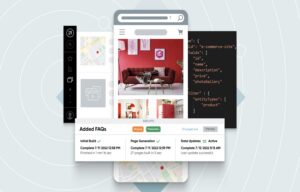How to Build a Mobile App That Starts Small and Scales Smart
3 min read
Why Mobile Apps Start Small and Win Big
Most of us don’t download an app because it’s flashy—we download it because it solves something simple in our daily routine. That’s the truth people often miss when they start talking about developing mobile apps. They get stuck chasing every feature under the sun and forget that users only care about one thing: does this app make life easier right now? What’s surprising is that the most successful apps, from note-taking tools to delivery platforms, started with a tiny, clear idea. No noise. No overload. Just one function that worked so well it pulled people in. That’s the mindset to keep at the start. Instead of building an “all-in-one” monster, think of the app as a small, helpful tool. Build the most miniature version that solves a real problem, test it quickly, and then refine it based on real user behavior. That’s how strong apps grow.
What You Need to Start
You’ll want clarity before writing a single line of code. Begin by identifying the specific problem you aim to solve, then list the users of the app and their reasons for using it. Choose a platform—iOS, Android, or both—based on users, not hype. Decide whether to use native or cross-platform tools. Set a tiny launch goal: one working flow that your user can complete. Keep scope tight. Avoid adding features that sound cool but don’t help the core task—budget time for design, simple tests, and one short user check. Develop a basic metrics plan to measure success.
- Define the single-user problem to solve.
- Choose a platform based on honest user feedback.
- Choose native or cross-platform wisely.
- Set a small, testable launch goal.
- Plan simple metrics to track success.
How To Plan a Simple App Release
Break the work into small chunks. Sketch the main screen and core flow first. Map each step the user takes. Write acceptance checks to confirm when a feature is complete. Build a clickable prototype to test the idea quickly. Use short development sprints—one or two weeks. After each sprint, review what worked and what didn’t. Keep a short backlog and remove items that don’t add clear value. Automate basic builds and tests to avoid manual errors. Prepare a simple launch checklist that includes installation steps, privacy notes, and a plan for gathering feedback. Launch small, watch behavior, and iterate.
- Sketch the main flow before coding.
- Create quick prototypes for early feedback.
- Run short sprints and review often.
- Automate builds and simple tests.
- Use a launch checklist for a smooth release.
Why Testing and Feedback Matter
You’ll save time by testing early. Real users reveal problems your team can’t predict. Run simple usability checks with a handful of people. Track key actions in the app to see where users drop off. Use crash logs to find stability issues quickly. Collect feedback in plain language and fix the highest-impact items first. Don’t chase perfection. Fix the things that block real use. Add small A/B tests for different wording or flows. Measure before and after each change to know what worked. Over time, minor fixes add up to a much smoother product.
- Do quick user tests early and often.
- Track main actions and drop-off points.
- Use crash logs to prioritize fixes.
- Tackle the highest-impact bugs first.
- Measure changes to confirm improvements.
Your Next Move with Mobile Apps
We suggest a clear first step: pick one small user need and build the shortest flow that satisfies it. Assign roles: one designer, one developer, one reviewer. Run a two-week sprint to get a working prototype. Test with real users and gather three clear improvements. Repeat. Keep scope tight, measure often, and let real use guide priorities. We’ll help you refine the checklist and test plan if you want guidance. Start small, learn fast, and grow the app only when you see real gains. That’s how valuable mobile products are built. Try it this week and note the change.







